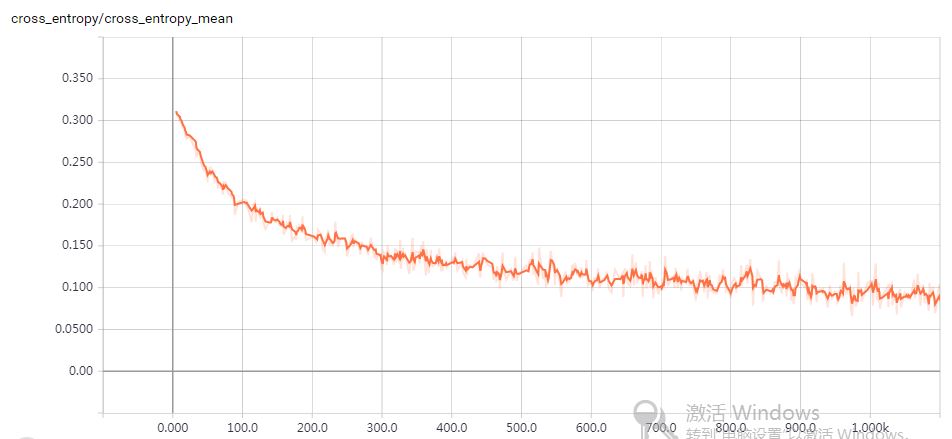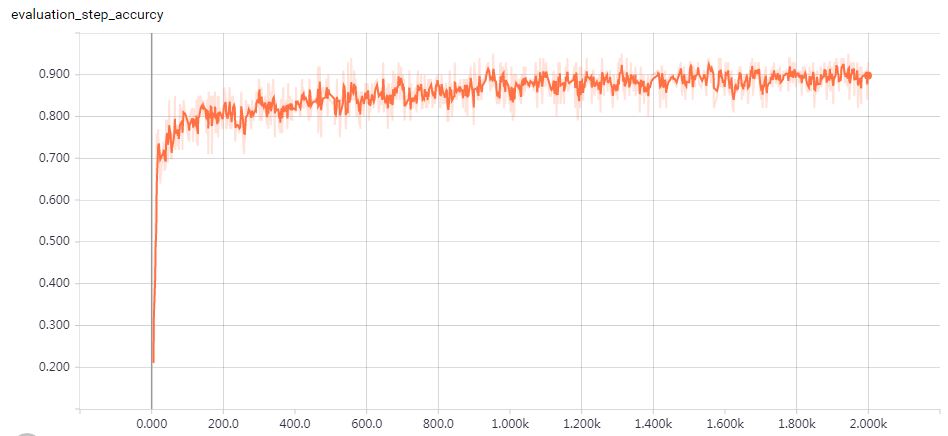图片分类系统
图片分类系统
待分类图片为5类花朵图片,将图片分为训练数据集、测试数据集和验证数据集,训练数据集用于训练调参,测试数据集和训练数据集用于交叉验证。然后搭建网络训练数据并计算精确度。
import glob
import os.path
import random
import numpy as np
import tensorflow as tf
from tensorflow.python.platform import gfile
#1. 模型和样本路径的设置
BOTTLENECK_TENSOR_SIZE = 2048
SUMMARY_DIR = "E://log2"
BOTTLENECK_TENSOR_NAME = 'pool_3/_reshape:0'
JPEG_DATA_TENSOR_NAME = 'DecodeJpeg/contents:0'
MODEL_DIR = 'E:\code\data'
MODEL_FILE= 'tensorflow_inception_graph.pb'
CACHE_DIR = '/datasets/bottleneck'
INPUT_DATA = 'E:/flower_photos'
VALIDATION_PERCENTAGE = 10
TEST_PERCENTAGE = 10
#2. 神经网络参数的设置
LEARNING_RATE = 0.01
STEPS = 2000
BATCH = 100
def variable_summaries(var, name):
with tf.name_scope('summaries'):
tf.summary.histogram(name, var)
mean = tf.reduce_mean(var)
tf.summary.scalar('mean/' + name, mean)
stddev = tf.sqrt(tf.reduce_mean(tf.square(var - mean)))
tf.summary.scalar('stddev/' + name, stddev)
#3. 把样本中所有的图片列表并按训练、验证、测试数据分开
def create_image_lists(testing_percentage, validation_percentage):
result = {}
sub_dirs = [x[0] for x in os.walk(INPUT_DATA)]
is_root_dir = True
for sub_dir in sub_dirs:
if is_root_dir:
is_root_dir = False
continue
extensions = ['jpg', 'jpeg', 'JPG', 'JPEG']
file_list = []
dir_name = os.path.basename(sub_dir)
for extension in extensions:
file_glob = os.path.join(INPUT_DATA, dir_name, '*.' + extension)
file_list.extend(glob.glob(file_glob))
if not file_list: continue
label_name = dir_name.lower()
training_images = []
testing_images = []
validation_images = []
for file_name in file_list:#遍历所有数据
base_name = os.path.basename(file_name)
chance = np.random.randint(100)
if chance < validation_percentage:
validation_images.append(base_name)
elif chance < (testing_percentage + validation_percentage):
testing_images.append(base_name)
else:
training_images.append(base_name)
result[label_name] = {
'dir': dir_name,
'training': training_images,
'testing': testing_images,
'validation': validation_images,
}
return result
#4. 定义函数通过类别名称、所属数据集和图片编号获取一张图片的地址。
# 这个函数通过类别名称、所属数据集和图片编号获取一张图片的地址。
# image_lists参数给出了所有图片信息。
# image_dir参数给出了根目录。存放图片数据的根目录和存放图片特征向量的根目录地址不同。
# label_name参数给定了类别的名称。
# index参数给定了需要获取的图片的编号。
# category参数指定了需要获取的图片是在训练数据集、测试数据集还是验证数据集。
def get_image_path(image_lists, image_dir, label_name, index, category):
label_lists = image_lists[label_name]
category_list = label_lists[category]
mod_index = index % len(category_list)
base_name = category_list[mod_index]
sub_dir = label_lists['dir']
full_path = os.path.join(image_dir, sub_dir, base_name)
return full_path
#5. 定义函数获取Inception-v3模型处理之后的特征向量的文件地址。
# 这个函数通过类别名称、所属数据集和图片编号获取经过Inception-v3模型处理之后的特征向量文件地址。
def get_bottleneck_path(image_lists, label_name, index, category):
return get_image_path(image_lists, CACHE_DIR, label_name, index, category) + '.txt'
# 6. 定义函数使用加载的训练好的Inception-v3模型处理一张图片,得到这个图片的特征向量。
def run_bottleneck_on_image(sess, image_data, image_data_tensor, bottleneck_tensor):
bottleneck_values = sess.run(bottleneck_tensor, {image_data_tensor: image_data})
bottleneck_values = np.squeeze(bottleneck_values)
return bottleneck_values
#7. 定义函数会先试图寻找已经计算且保存下来的特征向量,如果找不到则先计算这个特征向量,然后#保存到文件。
def get_or_create_bottleneck(sess, image_lists, label_name, index, category, jpeg_data_tensor, bottleneck_tensor):
# 获取一张图片对应的特征向量文件的路径。
label_lists = image_lists[label_name]
sub_dir = label_lists['dir']
sub_dir_path = os.path.join(CACHE_DIR, sub_dir)
if not os.path.exists(sub_dir_path): os.makedirs(sub_dir_path)
bottleneck_path = get_bottleneck_path(image_lists, label_name, index, category)
if not os.path.exists(bottleneck_path):
image_path = get_image_path(image_lists, INPUT_DATA, label_name, index, category)
image_data = gfile.FastGFile(image_path, 'rb').read()
bottleneck_values = run_bottleneck_on_image(sess, image_data, jpeg_data_tensor, bottleneck_tensor)
bottleneck_string = ','.join(str(x) for x in bottleneck_values)
with open(bottleneck_path, 'w') as bottleneck_file:
bottleneck_file.write(bottleneck_string)
else:
with open(bottleneck_path, 'r') as bottleneck_file:
bottleneck_string = bottleneck_file.read()
bottleneck_values = [float(x) for x in bottleneck_string.split(',')]
return bottleneck_values
#8. 这个函数随机获取一个batch的图片作为训练数据。
def get_random_cached_bottlenecks(sess, n_classes, image_lists, how_many, category, jpeg_data_tensor, bottleneck_tensor):
bottlenecks = []
ground_truths = []
for _ in range(how_many):
label_index = random.randrange(n_classes)
label_name = list(image_lists.keys())[label_index]
image_index = random.randrange(65536)
bottleneck = get_or_create_bottleneck(
sess, image_lists, label_name, image_index, category, jpeg_data_tensor, bottleneck_tensor)
ground_truth = np.zeros(n_classes, dtype=np.float32)
ground_truth[label_index] = 1.0
bottlenecks.append(bottleneck)
ground_truths.append(ground_truth)
return bottlenecks, ground_truths
#9. 这个函数获取全部的测试数据,并计算正确率。
def get_test_bottlenecks(sess, image_lists, n_classes, jpeg_data_tensor, bottleneck_tensor):
bottlenecks = []
ground_truths = []
label_name_list = list(image_lists.keys())
for label_index, label_name in enumerate(label_name_list):
category = 'testing'
for index, unused_base_name in enumerate(image_lists[label_name][category]):
bottleneck = get_or_create_bottleneck(sess, image_lists, label_name, index, category,jpeg_data_tensor, bottleneck_tensor)
ground_truth = np.zeros(n_classes, dtype=np.float32)
ground_truth[label_index] = 1.0
bottlenecks.append(bottleneck)
ground_truths.append(ground_truth)
return bottlenecks, ground_truths
#10. 定义主函数。
def main(_):
image_lists = create_image_lists(TEST_PERCENTAGE, VALIDATION_PERCENTAGE)
n_classes = len(image_lists.keys())
with gfile.FastGFile(os.path.join(MODEL_DIR, MODEL_FILE), 'rb') as f:
graph_def = tf.GraphDef()
graph_def.ParseFromString(f.read())
bottleneck_tensor, jpeg_data_tensor = tf.import_graph_def(
graph_def, return_elements=[BOTTLENECK_TENSOR_NAME, JPEG_DATA_TENSOR_NAME])
bottleneck_input = tf.placeholder(tf.float32, [None, BOTTLENECK_TENSOR_SIZE], name='BottleneckInputPlaceholder')
ground_truth_input = tf.placeholder(tf.float32, [None, n_classes], name='GroundTruthInput')
with tf.name_scope('final_training_ops'):
weights = tf.Variable(tf.truncated_normal([BOTTLENECK_TENSOR_SIZE, n_classes], stddev=0.001))
variable_summaries(weights,'/weights')
biases = tf.Variable(tf.zeros([n_classes]))
variable_summaries(biases, '/biases')
logits = tf.matmul(bottleneck_input, weights) + biases
tf.summary.histogram('/logits', logits)
final_tensor = tf.nn.softmax(logits)
tf.summary.histogram( '/final_tensor', final_tensor)
with tf.name_scope('cross_entropy'):
cross_entropy_mean=-tf.reduce_mean(ground_truth_input*tf.log(tf.clip_by_value(final_tensor,1e-10,1.0)))
tf.summary.scalar('cross_entropy_mean',cross_entropy_mean)
train_step = tf.train.GradientDescentOptimizer(LEARNING_RATE).minimize(cross_entropy_mean)
with tf.name_scope('evaluation'):
correct_prediction = tf.equal(tf.argmax(final_tensor, 1), tf.argmax(ground_truth_input, 1))
evaluation_step = tf.reduce_mean(tf.cast(correct_prediction, tf.float32))
merged = tf.summary.merge_all()
with tf.Session() as sess:
summary_writer = tf.summary.FileWriter(SUMMARY_DIR, sess.graph)
init = tf.global_variables_initializer()
sess.run(init)
for i in range(STEPS):
train_bottlenecks, train_ground_truth = get_random_cached_bottlenecks(
sess, n_classes, image_lists, BATCH, 'training', jpeg_data_tensor, bottleneck_tensor)
summary, _ =sess.run([merged,train_step], feed_dict={bottleneck_input: train_bottlenecks, ground_truth_input: train_ground_truth})
summary_writer.add_summary(summary, i)
if i % 100 == 0 or i + 1 == STEPS:
validation_bottlenecks, validation_ground_truth = get_random_cached_bottlenecks(
sess, n_classes, image_lists, BATCH, 'validation', jpeg_data_tensor, bottleneck_tensor)
validation_accuracy = sess.run(evaluation_step, feed_dict={
bottleneck_input: validation_bottlenecks, ground_truth_input: validation_ground_truth})
print('Step %d: Validation accuracy on random sampled %d examples = %.1f%%' %
(i, BATCH, validation_accuracy * 100))
test_bottlenecks, test_ground_truth = get_test_bottlenecks(
sess, image_lists, n_classes, jpeg_data_tensor, bottleneck_tensor)
test_accuracy = sess.run(evaluation_step, feed_dict={
bottleneck_input: test_bottlenecks, ground_truth_input: test_ground_truth})
print('Final test accuracy = %.1f%%' % (test_accuracy * 100))
summary_writer.close()
if __name__ == '__main__':
main(_)
结果可视化
可以看到代价函数随迭代步数的增加而减小,分类精度随训练步数增加而增加


活在当下!康顺


